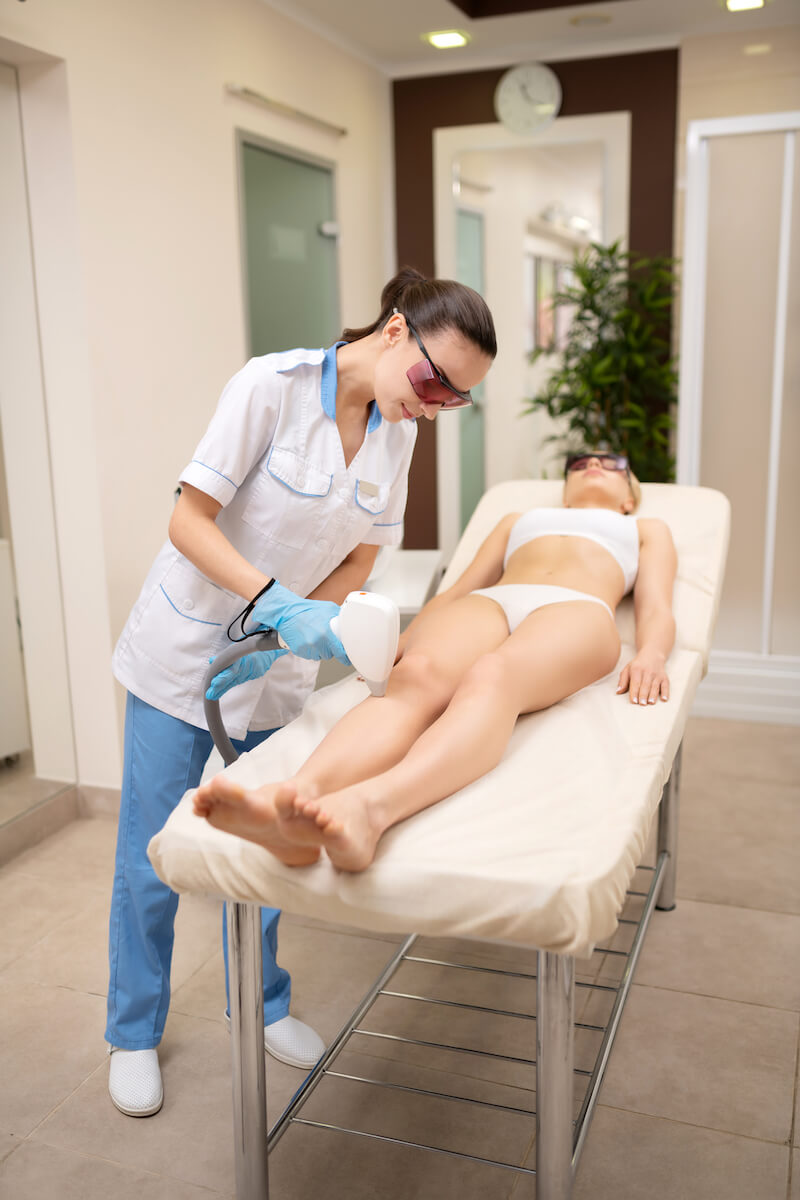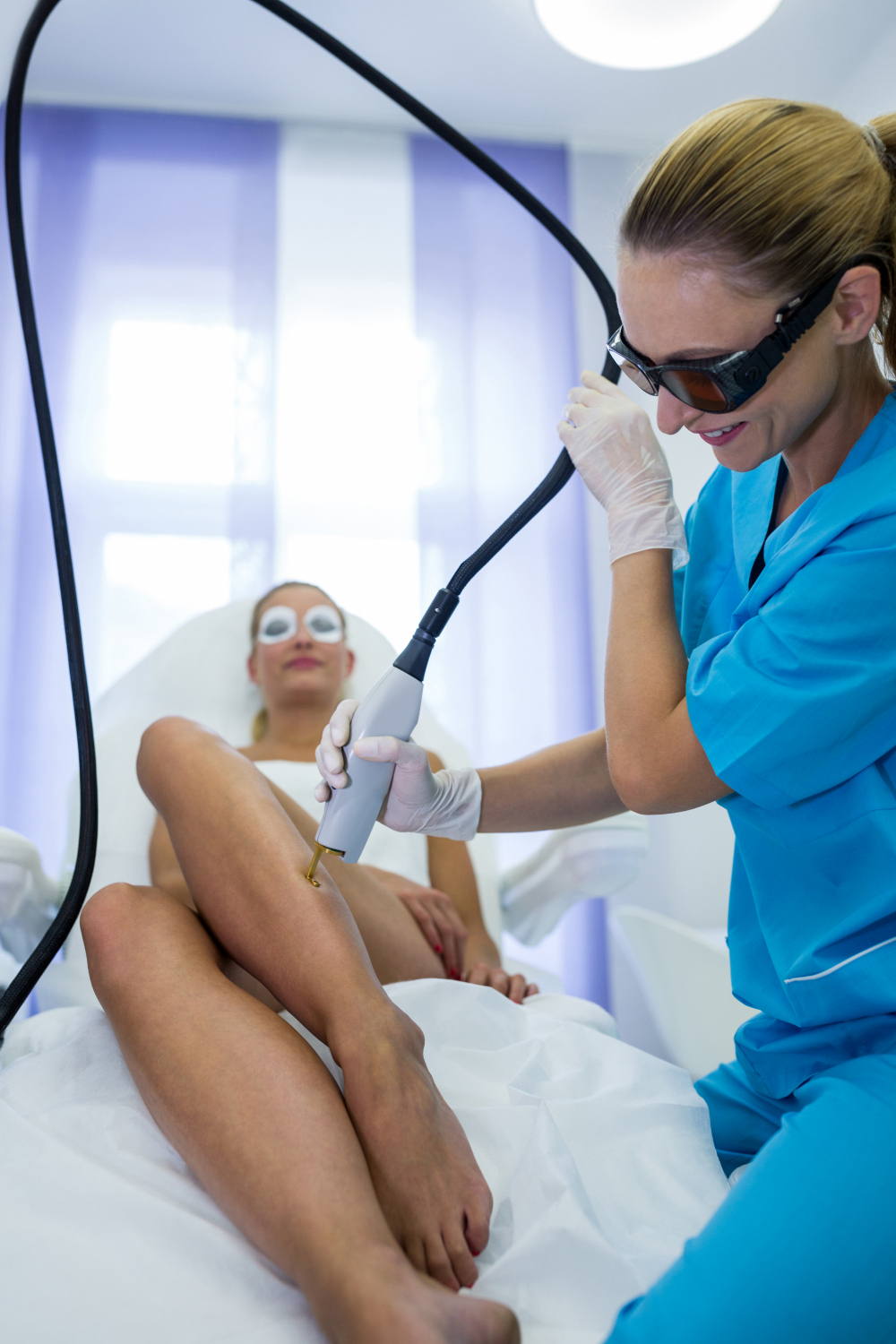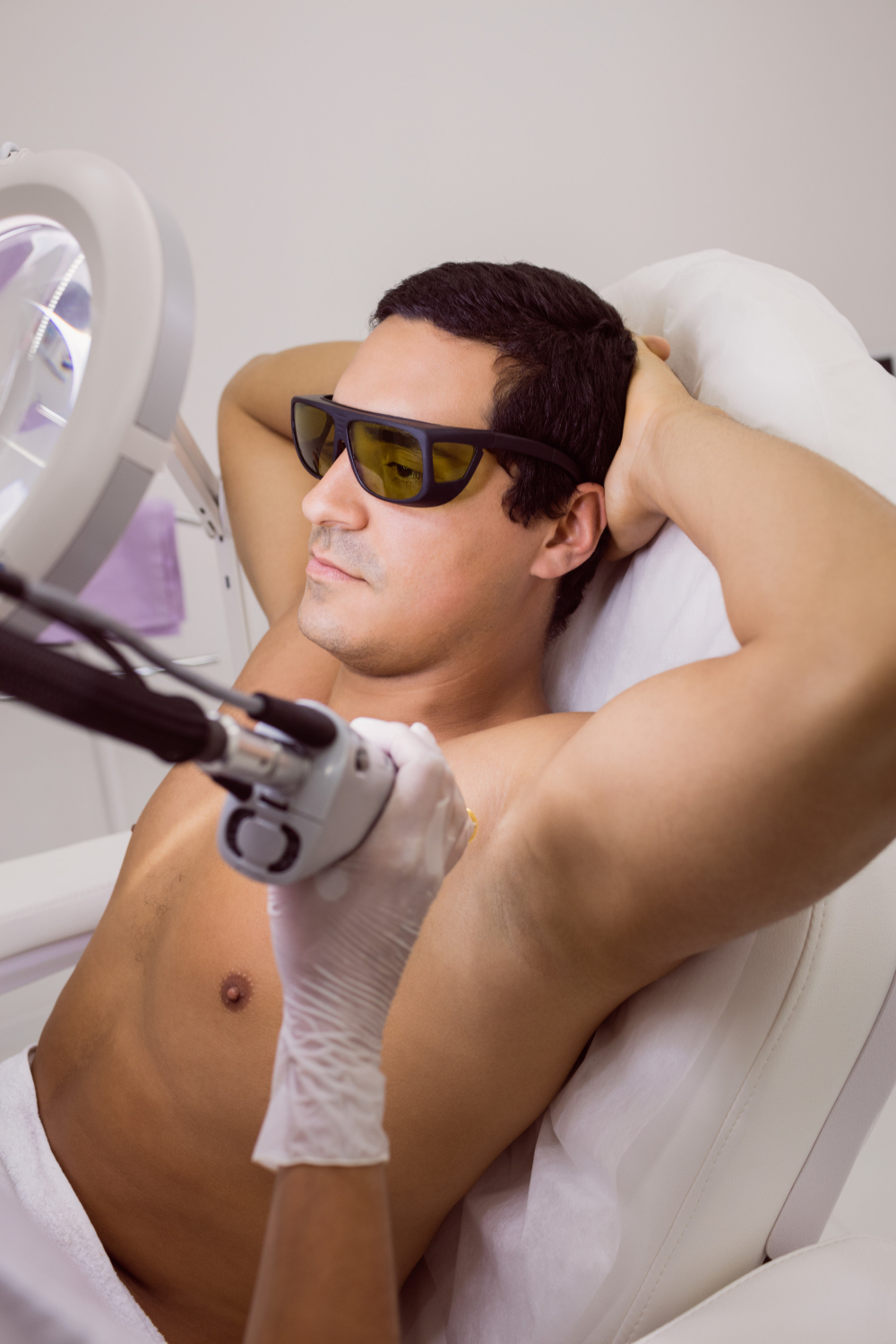Laser hair removal and varicosities
Laser hair removal is a method of removing unwanted hair that uses an intense beam of light to destroy hair follicles. The benefits of this method include a permanent reduction in hair growth, fewer ingrown hairs and softer skin.
The indications for laser hair removal treatment are primarily aesthetic, to remove unwanted hair on the face, neck, legs, arms, underarms and bikini area. This method is suitable for almost all skin and hair types, although the best results are often obtained on dark hair on light skin.
Treatment results vary from person to person and depend on factors such as hair density, hair color and thickness, as well as the area treated. In general, several sessions are required to achieve a significant reduction in hair growth, and results can be permanent if enough hair follicles are destroyed.
It's important to note that laser hair removal treatment can cause temporary side effects such as redness, tingling and swelling, as well as a risk of burning or skin color change in rare cases. It is therefore essential to have the procedure carried out by a qualified and experienced professional.
Laser treatment of varicose veins
Laser treatment of spider veins is a common treatment option for improving the appearance of the skin and reducing the symptoms associated with spider veins. Spider veins are small, dilated blood vessels visible on the surface of the skin, often referred to as "spider veins". The laser emits an intense light that targets the blood pigmentation in spider veins, heating and destroying the blood vessels. The destroyed blood vessels are then eliminated naturally by the body.
The main indications for laser treatment of spider veins are to improve the appearance of the skin, reduce the symptoms of pain and discomfort associated with spider veins, and improve blood circulation.
Laser treatment can be performed on various parts of the body, including the legs, face, arms and back. It is generally recommended for people with small to medium-sized spider veins.
The results of laser treatment can vary according to the extent and severity of the spider veins, and the type of laser used. However, results may be visible as early as the first session, and spider veins may be considerably reduced or eliminated after several sessions. It is important to note that laser treatment does not guarantee prevention of the appearance of new spider veins, but can help improve the appearance of the skin and relieve associated symptoms.
Lasers
The most commonly used lasers for laser hair removal are diode lasers, Alexandrite lasers and Nd:YAG lasers. The laser emits a pulsed light that is absorbed by the melanin in the hair follicle, damaging the follicle and preventing hair regrowth.
For the treatment of spider veins, the most commonly used lasers are Nd:YAG and pulsed dye lasers. The laser targets the pigmentation of the blood in the veins, heating and damaging the vein wall, leading to its destruction and absorption by the body.
For both treatments, an initial consultation is usually necessary to determine the most appropriate type of laser and the number of sessions required. During treatment, the laser is applied to the target area using regular, controlled movements. Most patients experience a slight tingling or burning sensation, but this is generally tolerable. Results depend on many factors, such as the size and depth of hair follicles or spider veins, as well as the patient's individual response to treatment.
Indications
Here are the indications for laser hair removal and spider veins:
- Hair and varicositis
- Hair removal
- Permanent hair reduction
- Pseudofolliculitis of the beard
- Benign pigmented lesions
- Benign vascular lesions and leg veins
Tell us about your needs
An expert will get back to you to discuss the various solutions.


